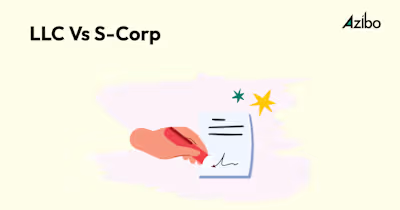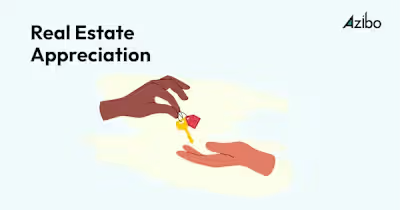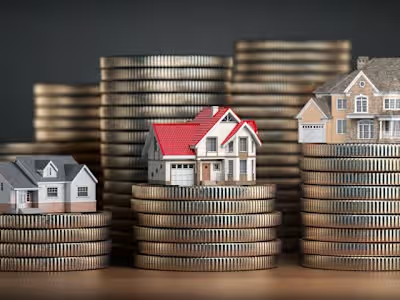What is the BRRRR method?
Like this project
Posted Jan 3, 2024
Explore the BRRRR method in real estate investing – a strategic approach to build wealth. Learn its pros and cons, steps, and whether it's the right fit for you
Likes
0
Views
27
The BRRRR method is a real estate strategy used by real estate investors to build wealth over time. It involves buying, rehabbing, renting, refinancing, and repeating the process.
As a rental owner, you’re probably always on the lookout for new ways to strengthen your real estate portfolio and generate rental income. House hacking, fix and flip, and buy and hold investment strategies are all commonly used among property owners, but there is one real estate investing strategy in particular that combines the best of multiple methods into one.
The BRRRR method is a strategic way for an experienced real estate investor to build a consistent passive income stream through real estate. It’s also a smart alternative to traditional financing if you plan to own and operate more than two rental properties. By using the BRRRR method, investors can recover a large amount of their capital and independently fund new properties.
In this blog, we’ll discuss what the BRRRR method is, its pros and cons, and how to decide if the BRRRR method makes sense for you.
What is the BRRRR method?
The BRRRR (Buy, Rehab, Rent, Refinance, Repeat) method is a multi-step real estate investment strategy that involves buying a distressed property, renovating it, renting it, refinancing it, and repeating the process with a subsequent property.
One key difference between the BRRRR Method and other real estate investment strategies is this method's focus on buying distressed property and using a cash-out refinance to fund the purchase of another property.
Buying a home below market value is a critical aspect of the BRRRR method. Without the price differential, it may be difficult to generate a substantial profit. Specific steps need to be followed to maximize potential profits. Here’s a step-by-step guide on how to invest in real estate using the BRRRR method:
1. Buy
To kick off the BRRRR investment method, you’ll need to purchase a distressed property below market value. There are two important factors to consider when executing this kind of home purchase: financing and after-repair value (ARV).
Distressed properties need substantial repairs, which can complicate the financing process. Mortgage lenders usually require home appraisals on the properties they finance. Given its poor condition, assessing the true property value of a distressed home is often difficult and can cause a lender to hesitate.
However, if you already have a property, whether that be an investment property or your primary residence, you could use the equity in that home to fund your purchase. Mortgages backed by collateral are less risky to lenders, which increases your chances of approval.
When financing a distressed home, you’ll need to calculate the property’s ARV. The ARV is the estimated value of the home after you’ve made necessary renovations. Real estate investors should follow the 70% rule, which limits investing to 70% of the property’s ARV. For example, if a property’s after repair value is $500,000, you shouldn’t pay more than $350,000 for the home. ARVs also depend largely on the condition of the local real estate market. Investing in the right location at the right time is key.
2. Rehab
Determining a property’s ARV can be tricky. The condition of the property at the time of purchase, the condition of the local market, and your total renovation budget will all influence a home’s value. The key here is to prioritize high-ROI renovations that help make the property functional and livable. Excessive and unnecessary upgrades are often where investors go wrong.
You’ll need to conduct an in-depth cost-benefit analysis to determine which home improvements are truly necessary and which are simply nice to have. Some of the best home renovation projects BRRRR investors can take on are:
Roof repairs: A leaky roof could cause major damage to the inside of a home and render it unlivable. Most tenants will feel more confident renting a home with a brand-new roof rather than an old one.
Kitchen renovations: Poorly designed kitchens are an instant turn-off to prospective tenants and buyers. Installing new kitchen cabinets, energy-efficient appliances, and space-saving furniture could go a long way.
Bathroom renovations or additions: As one of the most frequently used rooms in the home, bathroom upgrades almost always produce a high ROI. Improving the functionality of existing bathrooms or adding a half bath makes a property much more attractive.
3. Rent
Finding the right tenants for your rental property is another important aspect of the BRRRR investing method. Here are the qualities you should look for throughout the tenant screening process:
Strong record of on-time rent payments.
Steady income streams.
Good, great, or excellent credit score.
Clean criminal history.
Positive landlord references.
You can obtain this information on a tenant by having them fill out a rental application, running a background check, and asking for references. Be sure to follow all federal and local housing laws throughout the process.
Property owners also need to determine an appropriate rent price for their units to achieve positive cash flow without setting a price so high that it deters potential tenants. You can determine how to price your rental by comparing the price of rent for similar units in the neighborhood. However, you’ll want to calculate the exact price of rent by subtracting your monthly expenses as a property owner from your ideal monthly cash flow.
4. Refinance
The fourth step of the BRRRR method is completing a cash-out refinance on your investment property to fund the next property. Not all lenders offer cash-out refinances on investment properties, so you’ll have to shop around for one with the best rates. Each lender has its own set of requirements; however, most lenders will require the following for a cash-out refinance:
A minimum credit score of 620.
A maximum debt-to-income ratio of 50% or less.
20% equity in the home.
Property owners may also need to own the property for a certain amount of time to qualify for a cash-out refinance and pay for closing costs, home appraisals, and other fees.
5. Repeat
Lastly, rental owners can take this investment strategy and repeat the process step-by-step with their next investment property. Although it can be a costly and time-consuming investment method, with practice comes profits.
Pros and cons of the BRRRR real estate investment strategy
As with any investment strategy, the BRRRR method comes with advantages and disadvantages. Before executing any real estate investment method, you want to assess how it will affect your financing capabilities, tax liabilities, and cash flow. You should also consider how the BRRRR method fits into your long-term investment strategy and the state of the real estate market. Here’s a closer look at the pros and cons of BRRRR:
Pros
When executed correctly, the BRRRR strategy comes with several benefits for real estate investors, such as the potential for high returns, equity accumulation, quality tenants, and the ability to scale.
Consistently high returns
Since BRRRR properties are purchased at a discount due to their poor condition, they're often sold at a much higher price after renovations, which generates a high ROI for investors. Not only do investors cash out at the time of sale, but they also generate consistent cash flow every month through rental income. BRRRR investors get the best of both worlds by profiting off of a buy-and-hold and a fix-and-flip strategy on the same property.
Multiple opportunities to build equity
Property owners can build equity through forced and natural appreciation. The renovations you make to your home in the rehab phase will hopefully generate forced appreciation, and the time that passes by during the rent phase will ideally generate natural appreciation. Unlike traditional forms of investing, BRRRR investors can grow equity at various stages and in multiple ways.
Finding quality tenants
Recently renovated properties tend to attract serious tenants who are willing to pay top dollar for units with optimal features and amenities. These types of tenants usually take better care of the property and pay their rent on time. Quality tenants help reduce maintenance expenses and secure rental income.
Achieving economies of scale
Lastly, the BRRRR method allows property owners to benefit from economies of scale. In business, economies of scale represent the cost advantage gained through increased production. As you acquire more investment properties, you produce more rental income, which helps to spread out your risk and lower the average operating cost per property.
Cons
While the BRRRR method has many benefits, it’s not an easy investment strategy to execute. Property owners should understand that implementing the BRRRR method can be time-consuming, complicated to manage, and difficult to finance.
Turning a profit takes time
Real estate is known for being a slow and steady investment. However, this is especially true with the BRRRR method. Whereas the fix-and-flip method could yield high returns in as little as 3 to 6 months, BRRRR properties could take several months or more than a year to turn a profit.
This is because BRRRR requires two waiting periods. The first waiting period is the rehab phase, during which renovations are made and the home is uninhabited by tenants. The second waiting period is referred to as the seasoning phase, which is the time it takes the lender to approve a cash-out-refinance for a subsequent investment property.
Switching real estate investment strategies can be stressful
Investors who are used to the buy-and-hold method probably won’t have any issues being a landlord. The same isn’t always true for investors who are used to fix-and-flip strategies or any sort of hands-off real estate investing approaches, such as REITs or crowdfunding.
Screening tenants and managing multiple rentals can be a stressful task. It’s certainly not for everyone. Investors should keep in mind that the more you repeat the BRRRR method, the more tenants you’ll have. On the other hand, rental owners who aren’t used to renovating distressed properties may find it difficult to find quality contractors, keep up with renovation timelines, and deal with project setbacks.
Financing renovations is expensive and high-risk
BRRRR investors should avoid underestimating their expenses, especially during the rehab phase. The BRRRR method involves making a lot of educated guesses, which can lead to cash flow problems in the future if investors are not conservative in their estimates.
It can be difficult to accurately estimate renovation costs, post-rehab value, and the amount of rent you’re able to charge, especially without prior experience. In many cases, investors will underestimate property expenses, such as immediate repairs, vacancy rates, and other unexpected long-term maintenance expenses that may arise once the rental is on the market. It's important to remember that you'll still need to keep up with your mortgage payment even if there's no rental income coming in.
Appraisal risk
Lastly, BRRRR investors run the risk of receiving a low appraisal. Lenders typically refinance properties based on their appraisal values. As a result, obtaining a cash-out refinance on your existing property may not be possible if it’s appraised at a lower value than expected.
How to decide if the BRRRR method is for you
The BRRRR real estate investment method is best for experienced investors who are ready to manage a passive rental income portfolio from beginning to end. Although the BRRRR method is more demanding than traditional real estate investment strategies, it essentially brings the best of the fix-and-flip and buy-and-hold methods into one. Real estate investors who are comfortable with risk, capable of making accurate estimates, and patient enough to see the BRRRR method through are well suited for this investment strategy.
Investors who are largely risk-averse, low on capital, and apathetic to managing large-scale home renovation projects are likely not the best candidates for this investment strategy. The rehab phase is arguably the most intensive step of the BRRRR method and is where a lot of money can be lost if investors are not careful. It’s important to have both the financial knowledge and personal bandwidth to successfully manage this part of the process.
If you’d like to acquire multiple rental properties through the BRRRR method but can’t commit to every step of the process, consider taking on a partner or building out a real estate team to manage the aspects you aren't familiar with. You can outsource or delegate the aspects of the BRRRR method you aren’t comfortable executing until you’re able to take them on yourself.
Vivian is a freelance real estate writer based in Brooklyn, NYC providing SEO blogging services to real estate companies. Her work focuses on educating first-time real estate investors on investment strategy and explaining proptech tools to new customers.







